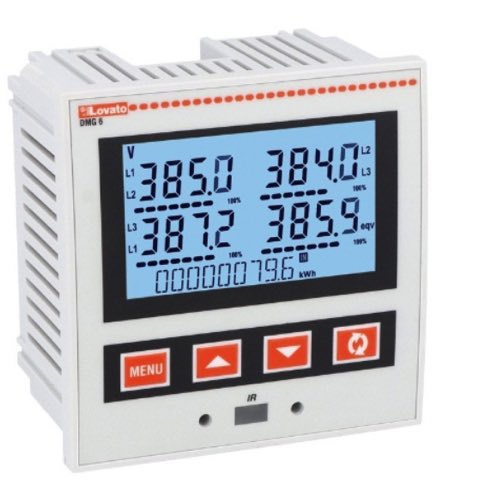
Lovato Test Equipment

Test equipment from Lovato is designed to deliver precise, reliable electrical measurements and other testing solutions for applications in power distribution and industrial automation and control. Lovato is known for innovative ideas combined with high-quality engineering. The company is best known for its series of multimeters that allow for direct and indirect measurement of voltages, currents, and resistances. Their Power Quality Analyzers permit more detailed diagnostics of installed systems. Meanwhile, Portable Earth Resistance Testers allow for safe measurement of grounding conditions within an installation. All of Lovato's test equipment has been built with the goals of accuracy and durability in mind and is widely used in industrial applications.
A neat aspect of Lovato test equipment is its integration with contemporary automation systems; seamless compatibility with Lovato’s broad array of control and protection devices is something of a theme throughout the company’s product lines. This is because its extensive use of digital technology allows the company to not only perform better with real-time data analysis but also to provide more advanced tools for diagnostics and testing.
Products
More Information about Lovato Test Equipment
Lovato's dedication to excellence and performance ensures that their testing devices are created to endure meticulous environments while still ensuring precision in their measurements. These tools serve a variety of purposes and provide necessary support to the industries of power management, manufacturing, and automation. They deploy diagnostics across a circuit's electrical panels and provide essential panel protection and energy monitoring. Whether the task is routine maintenance or intricate troubleshooting, the test equipment of Lovato is used by an array of professionals to provide system diagnostics affecting performance and even operational safety.
Analog and Digital Control Signals: The Basics
Digital Signals
Digital signals are represented in either a true or false. There is no gray area with digital signals. An example of this might be a light switch. A light switch is either on or off. Another example of this might be a motor that is running or not running. Digital signals can be generated with both AC and DC circuits with varying voltages, currents and resistance. Some practical examples of using digital signals in an industrial environment might be if a pump is running or not running or a whether a valve is open or closed.
Analog Signals
Analog signals convey information in the form of a range. A light switch might be on or off as a digital signal, but a dimmer switch would be an analog signal. It can be on or off, but it can also be somewhere in between. A practical example of using analog signals in an industrial environment would be if there is a need to measure the level of a tank; whether it's full, empty or somewhere in between. Analog signals can take many different forms with some of the more common being a 4 to 20 milliamp signal or a 0 to 5 or 0 to 10 volt signal.
Communication
Communication in a device can either be sent or received. Whether that data is sent or received depends on the type of information. Is there a need to monitor the status of something? If so, an input needs to be received about that information. Is there a need to control something? If so, an output needs to be sent about what needs to occur. Receiving inputs and setting outputs are both things that can be accomplished by using both digital and analog signal types. Therefore, the signals are referred to as analog outputs (AO), analog inputs (AI), digital inputs (DI) or digital outputs (DO).

